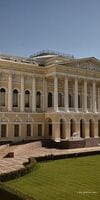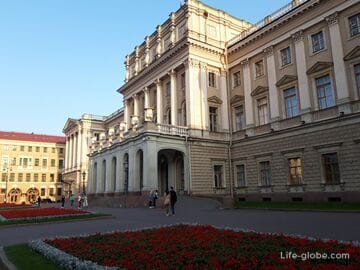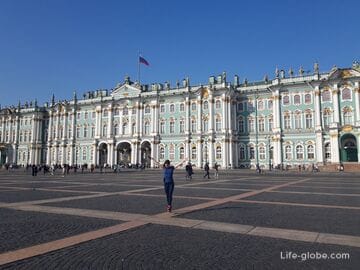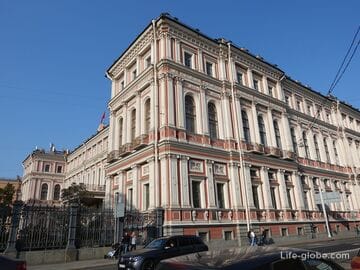The Mikhailovsky Palace is a historic building and former grand ducal palace located in the center of St. Petersburg.
Today, the Mikhailovsky Palace is part of the architectural complex of the State Russian Museum. Some of the museum's collections are displayed within its walls and temporary (rotating) exhibitions are held.
The Mikhailovsky Palace is one of the most beautiful buildings in the center of St. Petersburg, as well as a monument of late classicism (Russian Empire style) architecture.
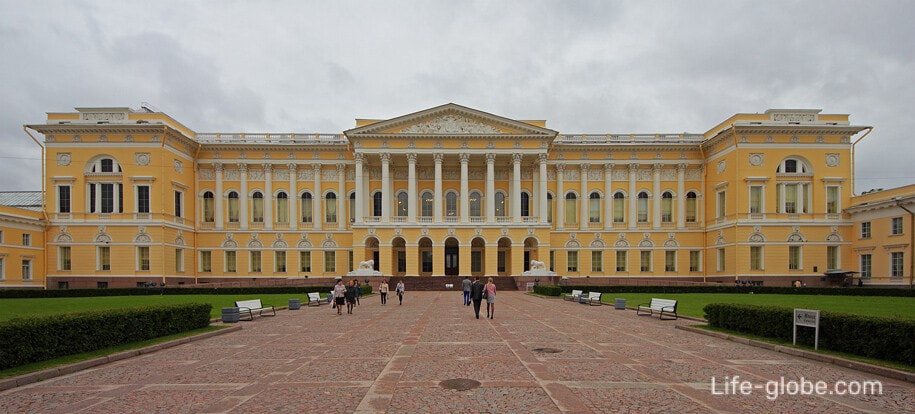
The palace was built in 1819-1825 by the architect Carlo Rossi, on the site of the adjacent garden (now the Mikhailovsky Garden).
The Grand Ducal Palace was built at the behest of Alexander I for Grand Duke Mikhail Pavlovich. Mikhail Pavlovich is the fourth son of Emperor Paul I and Maria Feodorovna, the younger brother of Emperors Alexander I and Nicholas I.
The palace was an ensemble, the central place in which was occupied by the palace itself, which was adjoined by two symmetrical service wings-squares: the Western one-the Maid of Honor and the eastern one-the Manege. In one row with the Manege Wing was the Stable Building, and behind it, at the corner of Engineering and Sadovaya Streets , was the Laundry House.
In the garden of the palace there was a pavilion, a pier on the Moika River and a bridge on the ponds.
In addition to the palace buildings, in the 1820s and 1830s, Carlo Rossi also created a square and a street associated with the name of Grand Duke Mikhail Pavlovich.
The palace was consecrated and granted by Emperor Alexander I to his younger brother in perpetual hereditary possession on August 30, 1825.
During the history of the palace interiors have been changed many times, mainly according to the wishes of Mikhail Pavlovich's wife - Grand Duchess Elena Pavlovna (before her marriage - Princess Charlotte of Württemberg).
After the death of Elena Pavlovna in 1873, her daughter, Grand Duchess Ekaterina Mikhailovna, lived in the palace.
After the death of Catherine Mikhailovna on April 30, 1894, the heirs decided to sell the palace to the treasury. On April 13 (25 new style), 1895, by the Personal Decree of the Emperor Nicholas II, the Russian Museum was established in the walls of the former palace in memory of Emperor Alexander III.
Today, the State Russian Museum is located within the walls of the former palace.
The front facade of the Mikhailovsky Palace (south) faces the Square of Arts (Engineering Street) and is decorated with an arcade and a Corinthian colonnade. The portico of the facade is crowned with a triangular pediment.
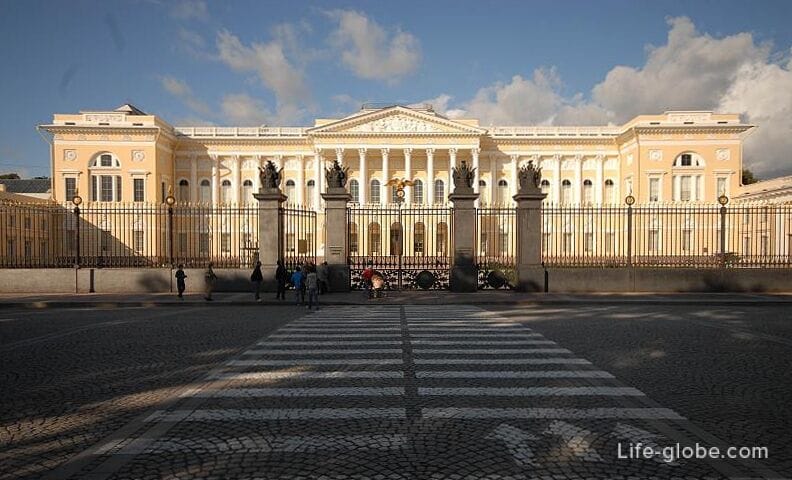
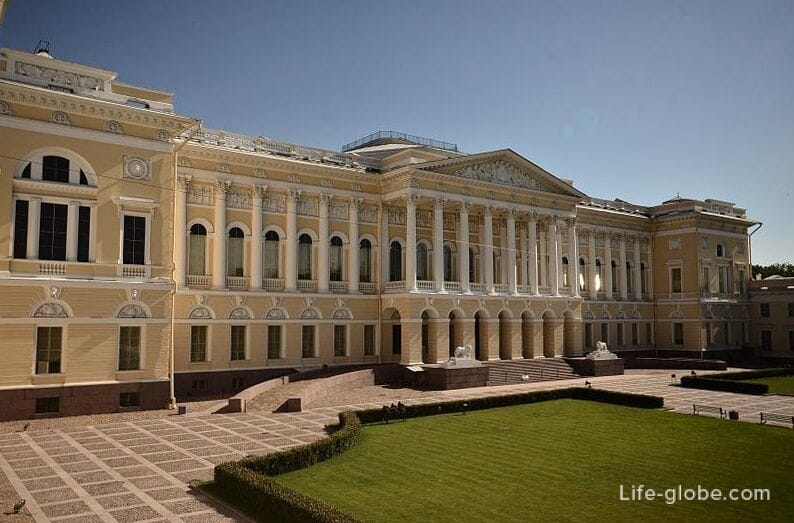
The northern facade, facing the Mikhailovsky Garden, is decorated in a similar way to the main facade.
The central part of the facade is a spacious, typically Italian loggia with columns of the Corinthian order, placed on the arcades.
The attic of the facade is crowned with a sculptural composition.
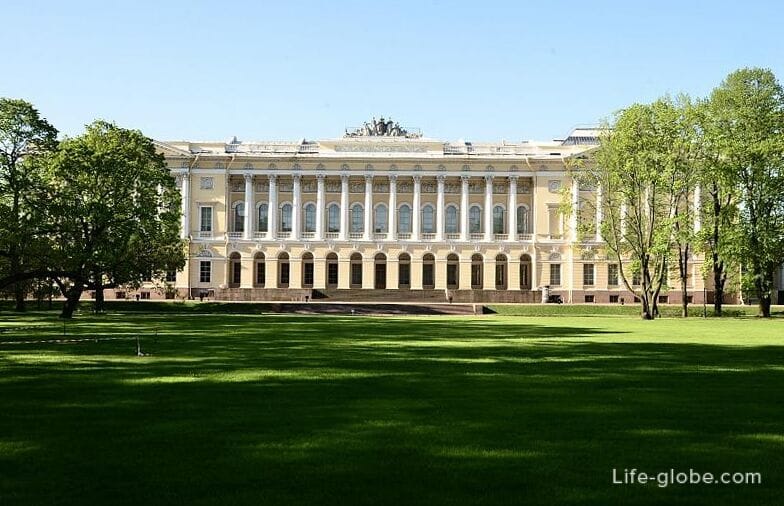
In front of the southern facade of the palace in the Mikhailovsky Garden there is a vast meadow ("Oil Meadow"), which has an irregular oval shape and is framed by an alley. Learn more about Mikhailovsky Garden…
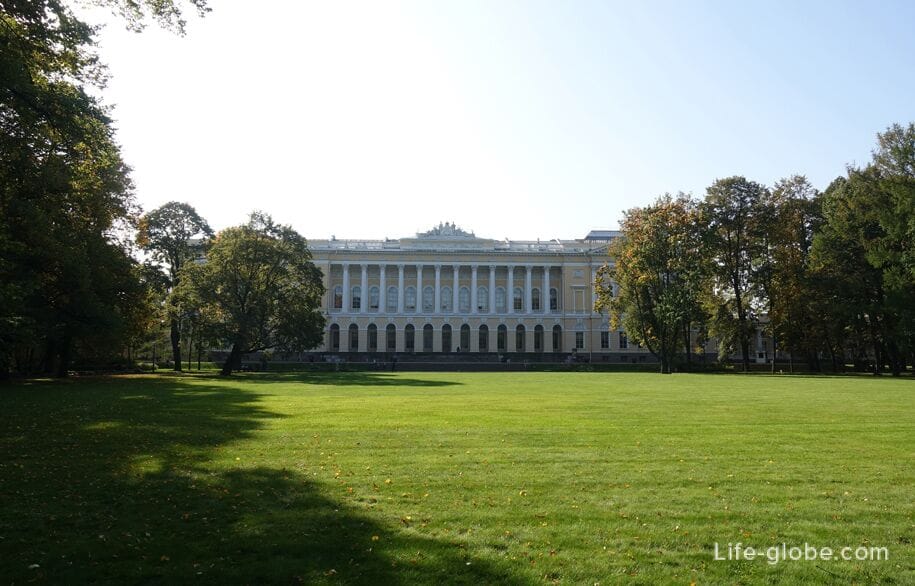
Russian Museum in the Mikhailovsky Palace
Russian Russian Museum-the world's largest museum of Russian art, whose collections are located in several historical buildings, together representing a unique architectural and artistic complex in the historical center of St. Petersburg. Learn more about the Russian Museum...
In the walls of the Mikhailovsky Palace, you can see some of the restored rooms and halls of the palace.
The palace also displays the museum's collections, including:
- "Old Russian art of the 12-17 centuries", where one of the largest and most significant collections of Old Russian paintings in Russia, including about six thousand icons, is attached.
The permanent exhibition, located in the first four halls of the Mikhailovsky Palace, presents part of the collection - the most valuable works created in the important art centers of Ancient Russia: Novgorod, Pskov, Vladimir, Suzdal, Moscow and Yaroslavl;
- "Russian art of the 18th century", which gives an idea of the main stages and trends in the development of art of that era.
Russian Russian portrait painters I. N. Nikitin and A. M. Matveev, the most prominent Russian portraitists, whose names are associated with the establishment of the secular trend in Russian fine art, occupy a special place in the section dedicated to the time of Peter the Great. ;
Russian Russian Art of the first half of the 19th century, which contains works that represent a variety of trends in Russian art at that time - classicism, Romanticism and realism emerging in the second third of the 19th century.
Including: works by K. P. Bryullov ("The Last Day of Pompeii", portraits of contemporaries and religious compositions) and samples of historical painting made by G. I. Ugryumov, A. I. Ivanov, A. E. Egorov, F. I. Bruni;
- "Russian art of the second half of the 19th century" with historical, genre, portrait and landscape painting by the masters of Wanderers' realism - the most significant phenomenon in Russian art of the 1870-1880s - and their predecessors.
A special section is devoted to the works of representatives of academism in painting and sculpture of that time;
- "Russian folk art of the 17th and 21st centuries" with exhibits arranged in chronological order and showing the history of the development of peasant art and local centers of artistic crafts in all major types and genres.


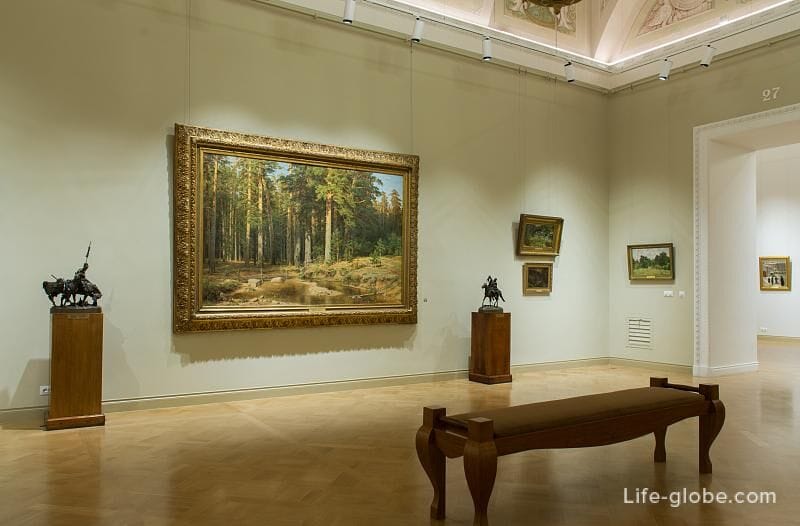
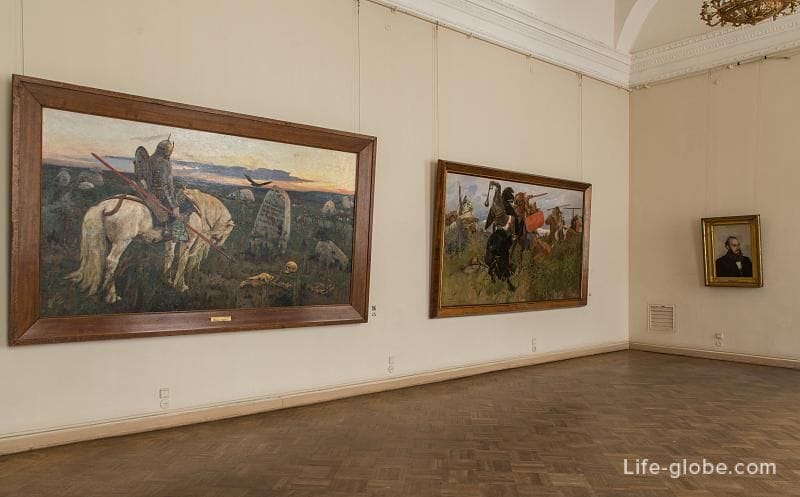
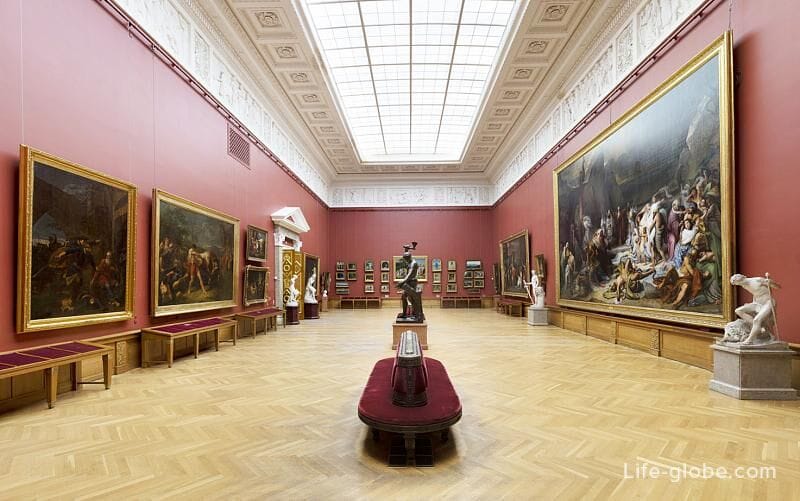
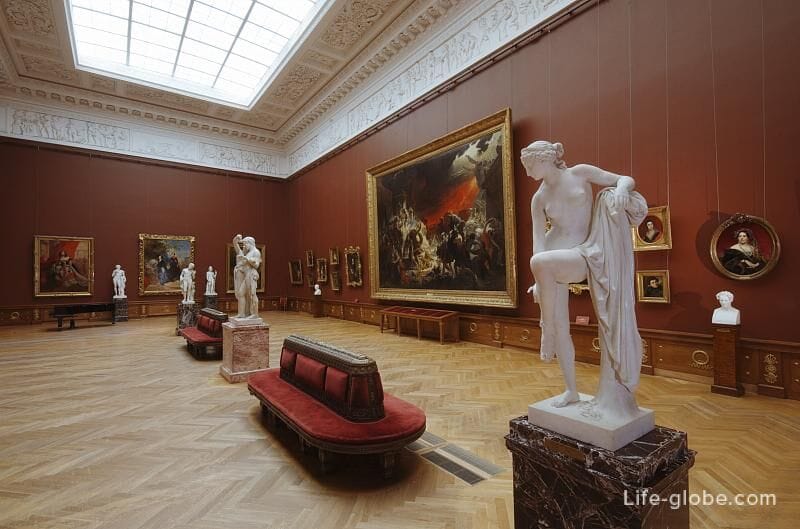
Interiors of the Mikhailovsky Palace
The interior of the palace was thought out to the smallest detail and struck with the splendor and consistency of style. Each hall of the palace was created in a unique ensemble with elements that coexist in a single harmony.
A special impression was made by the vestibule that has survived to this day - a wide entrance arch and the marches of the main staircase.
The gallery on the second floor of the staircase is decorated with Corinthian columns with bas-reliefs on the walls. The ceiling is richly decorated with paintings by Giovanni-Baptiste Scotti.
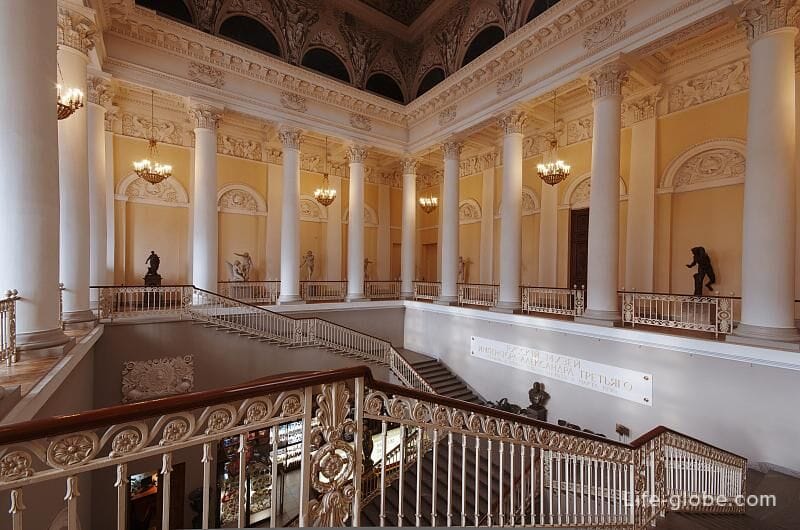

Orange living room

Karmazinnaya living room
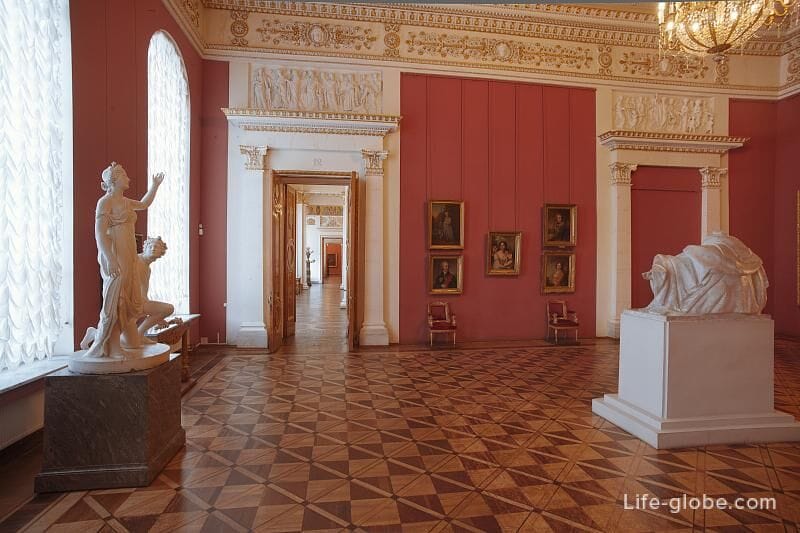
Blue Gallery
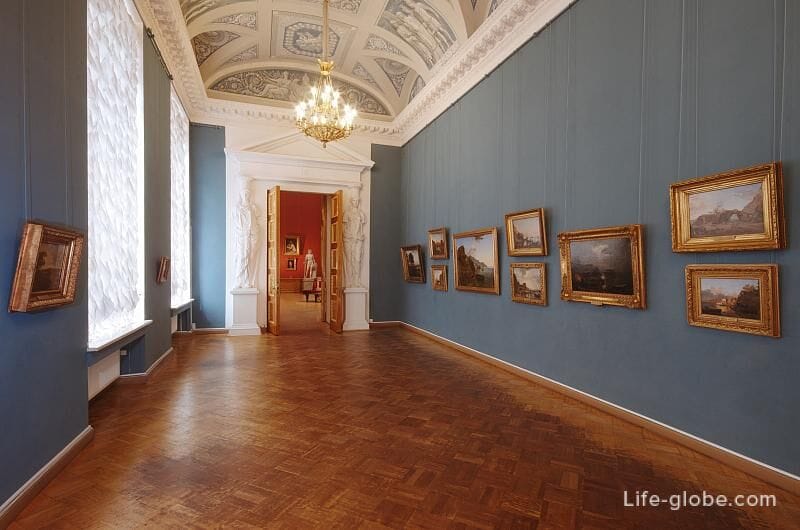
Belokolonny hall
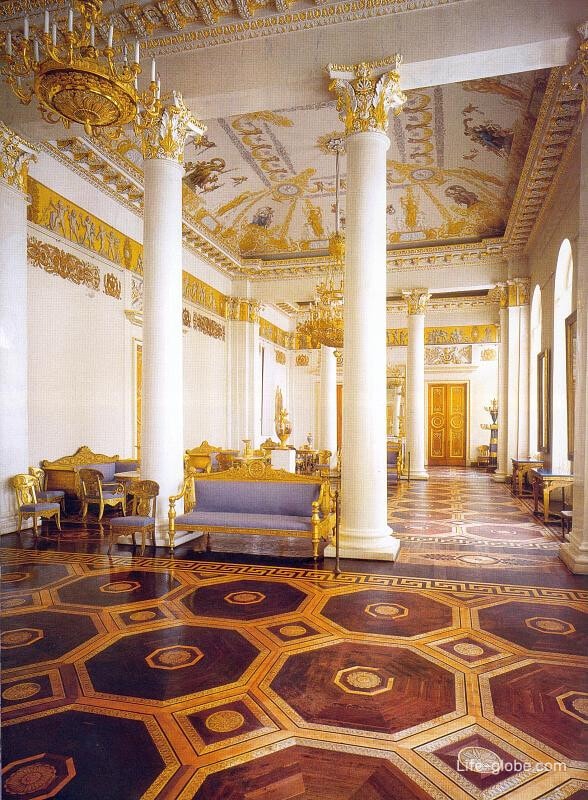
Mikhailovsky Palace Ensemble
Next to the Mikhailovsky Palace, on the embankment of the Griboyedov Canal, there is a building - Benois corps, which is connected to the wing of the Mikhailovsky Palace by a special passage and is also part of the Russian Museum.
The Benoit building houses permanent art displays from the late 19th and early 21st centuries, as well as rooms for temporary exhibitions. Learn more about the Benoit Corps…
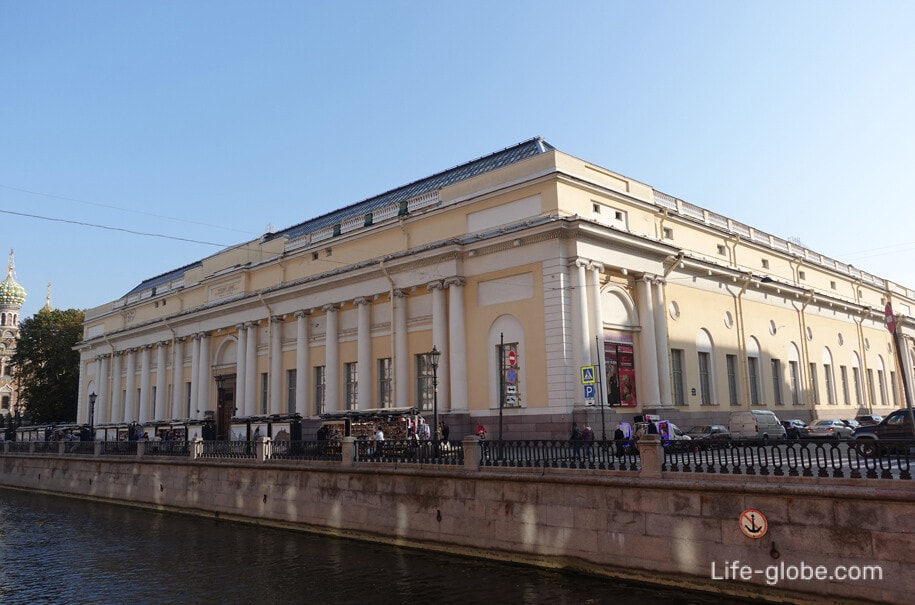
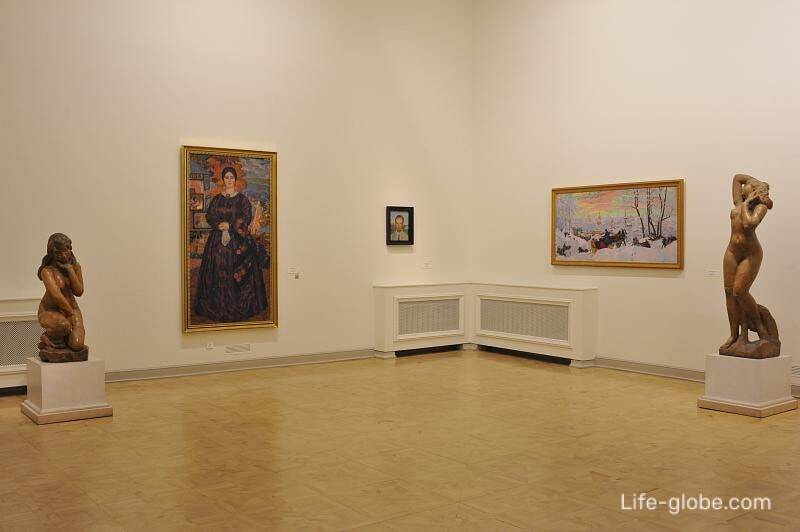
On the eastern side of the Mikhailovsky Palace is adjacent to the historical building, built in 1902-1913 by the architect of the Imperial court V. F. Svinyin to display ethnographic collections. Today it is The Russian Ethnographic Museum, which is one of the largest ethnographic museums in the world.
Address of the Ethnographic museum: 4/1 Engineering Street. Read more about the Russian Ethnographic Museum with photos, descriptions and website...
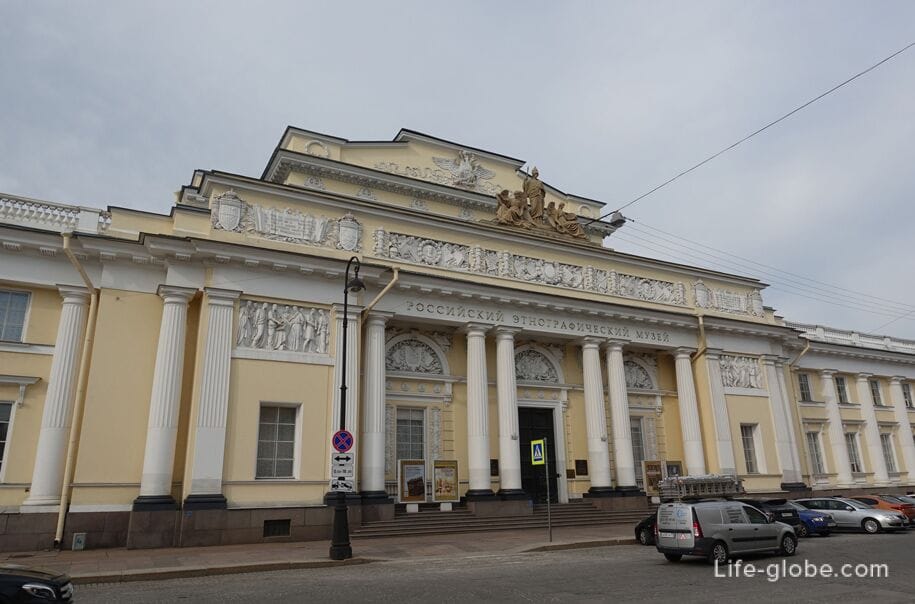
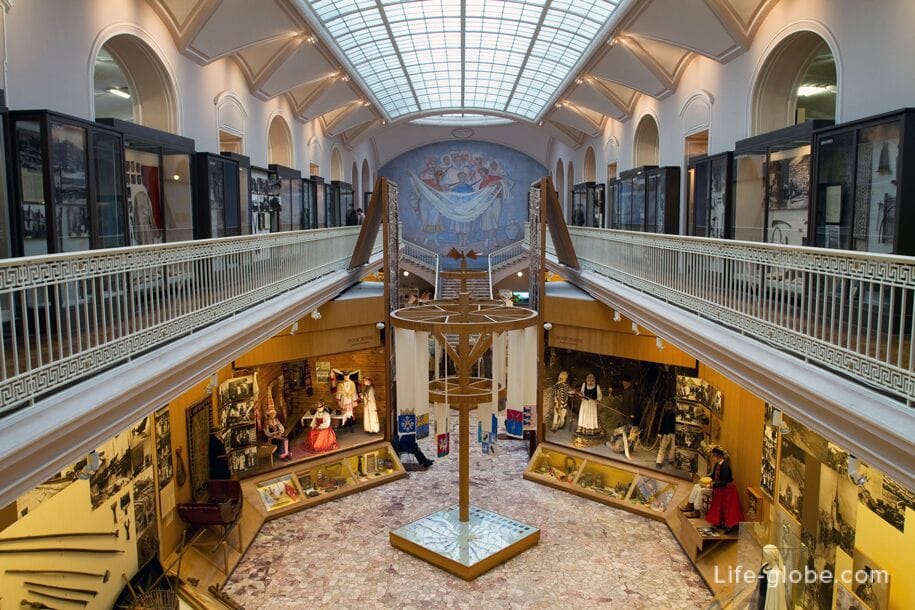
Practical information
Now the main retrospective exhibition of the State Russian Museum is located in the Mikhailovsky Palace and the Benois Building.
In addition to permanent exhibitions, temporary (rotating) exhibitions are also held in the halls and rooms of the Mikhailovsky Palace and the Benois Building.
Address of the Mikhailovsky Palace: Engineering street, 4.
Address of the Benoisbuilding : Griboyedov Canal Embankment, 2.
The nearest metrostations are Nevsky Prospekt, Gostiny Dvor, and Admiralteiskaya.
Buses: №№ 3, 22, 27, 49, K212. Trolleybuses: №№ 5 and 22.
You can visit the museum in the Mikhailovsky Palace by purchasing a separate ticket (only to the palace) or a complex ticket and use it to visit the Mikhailovsky Palace + other objects of the Russian Museum.
At the information desks in the Mikhailovsky Palace, the Benois Wing and in Mikhailovsky Castle you can learn about the opening hours museum, temporary exhibitions, events, lectures, classes and concerts held at the Russian Museum.
We recommend that you check all the necessary information, including the museum's working hours, ticket prices, exhibitions and events, before visiting the official website of the museum.
The website of the State Russian Museum: en.rusmuseum.
All accommodation facilities in St. Petersburg, including in the city center and more remote from it, can be viewed and booked here




